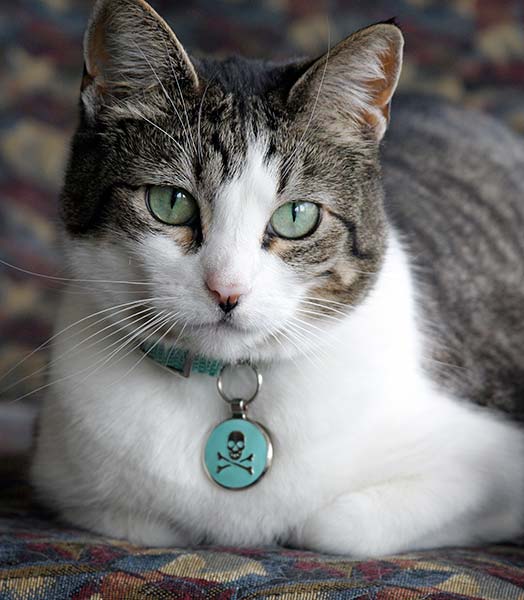Why Pet ID Tags Are Still Necessary in a Microchip World
Writing this here is a little bit like “preaching to the choir”. You’re reading this on a website for pet ID tags so you likely already understand the importance of having tags on your pets. But maybe a google search brought you here and you’re wondering if ID tags are just old fashioned ornaments in a modern world. Here are some thoughts that may convince you of the value of tags on your pets.

We often hear people say that their pet is microchipped so they don’t need a pet tag. First off, we should point out that we think microchips are great and without a doubt, have reunited many lost pets with their families. We've all read the amazing stories about pets being found years later or thousands of miles away, all because of a microchip. That’s the microchip’s greatest feature- your pet can’t ever lose it. These stories especially, make it seem like microchips are the perfect, high tech solution for pet identification.
But consider a 2009 study published in the Journal of the American Veterinary Medical Association; they looked at over 7,000 microchipped pets in 53 shelters. Less than half of the chipped pets got back home. The biggest problem? The information in the chip database was no longer correct. I experienced this exact situation with one of my cats. When we found him, he had a collar but no ID tag. Eventually, we were able to take him to our vet to get him scanned. When they found he had a chip, we assumed that would be his ticket home. But like over half the chipped pets out there, his information led nowhere. At least we learned his name from the chip registry. Now he wears a collar and an ID tag.
If, as the study suggests, only 40-50% of chipped pets get back home, how does that compare to pets wearing ID tags? That is a nearly impossible question to answer and the reason is because of how well pet tags really work. Getting a lost pet with a tag home is simple and much faster that scanning. If you find a pet with an ID tag, you’ll likely know his name, address and contact number, instantly. You may find that he lives right around the corner and you can walk him home. Or a quick call and you can coordinate with the pet's owner on how to get them reunited. Because of the simplicity of a pet ID tag, there is no data about how often they “work” to get pets back home. It happens quietly, all across the country, thousands of times a every day.
It’s not difficult to understand the reason that over half of the information in the microchip database is inaccurate. When people move or get a new phone number, updating their pet’s microchip data is likely not on their to-do list. It should be, but the reality is that the microchip and its data, are rarely thought of again after the day they get it. A tag on a collar is always there in front of you. You probably look at it periodically to make sure it’s easily readable and that’s an easy reminder if your information ever changes.
 Stray or lost pet?
Stray or lost pet?
One last thought is that a lost pet wearing a collar and tags is much more likely to receive help. A collar and tags signal to people that the animal is someone’s pet and probably not a stray. The pet ID tag also means that there’s a chance for a quick and easy resolution to getting the pet back to his home. If you find a lost pet with no tags, do you have the time to walk him to your car and drive him to a vet to see if he even has a chip? That’s a lot to ask someone to do.
Without a doubt, microchips and pet ID tags work well in getting lost pets home. Their differences give each a distinct advantage in different areas. The easy choice and correct answer is that you need both, the old “belt and suspenders”. Of course, neither can do its job if its information isn’t accurate. Is your pet’s data accurate? The time for making sure your pet is fully protected is right now. Unfortunately, many people don’t think about their pet’s ID until the one day their pet doesn’t come home.

